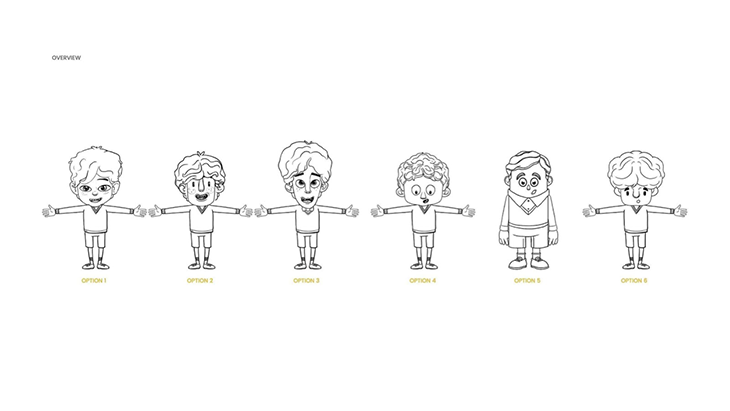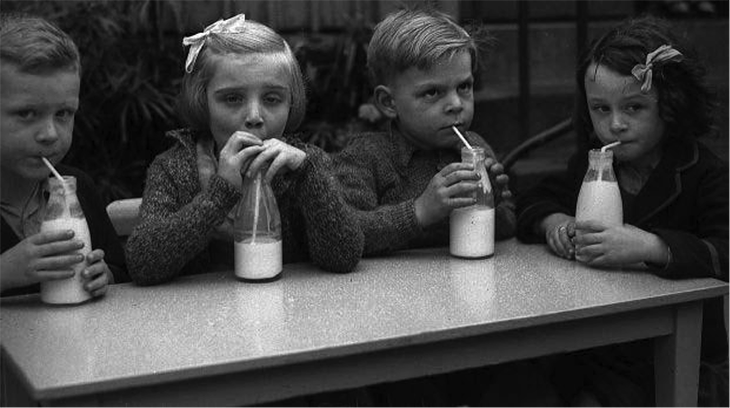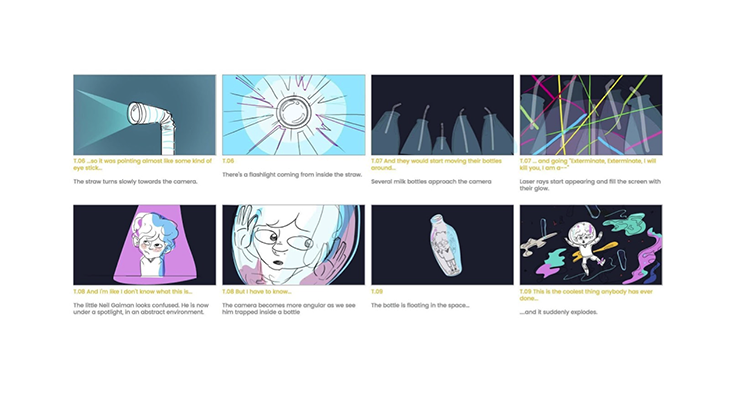In 2017, science-fiction network Syfy celebrated its 25th anniversary by inviting fans to explore the history of the genre through a 15-part podcast series called Syfy25: Origin Stories. In it, host Adam Savage conducted in-depth interviews with sci-fi creators and thought leaders.
The project was created in partnership with creative agency 72andSunny and its in-house production company Hecho En 72. The entire effort was part of a larger campaign that marked the occasion with promotional assets such as the creation of content spaces for fans, a Battlestar Galactica marathon and screenings of sci-fi classics in theatres across the U.S..
Some months later, Syfy25: Origin Stories continues to strengthen fans’ love for a genre that crosses borders. Part of that included turning eight of the podcasts into clever and creative animated shorts.
The anniversary coincided with the network’s desire to dedicate itself more to science fiction and to the fans who make the genre so “wonderful and compelling,” said Jon Cotton, VP of digital content at Syfy.
“This was meant to celebrate the collective history of science fiction,” he says “We felt the most authentic way to do that was by elevating the voices of the creators who have made it what it is. We chose Adam Savage to host the podcast because he’s one of the superfans out there, and a renowned interviewer. His true love lifts the love of the genre.”
The project began by brainstorming an ideal list of characters and experts to feature.
“A lot of the research was about getting the right talent to participate and express their love for the genre with us,” says Cotton.
Syfy sought a different type of engagement with the audience with this project. For these pieces, the audio of the interview appeared as a voice-over as the story unfolded visually, revealing how each character discovered an element of science fiction in his or her real life. Syfy worked with Los Angeles-based production and animation company Laundry to develop the pieces.
“We needed a company with the availability to really beautifully produce our work in eight different styles. Based on Laundry’s previous work and the picture they painted for this project, we knew they were the right partners,” says Cotton.
Evolving from Podcasts to Animations
Syfy’s first request for Laundry was that they stay away from the typical sci-fi look in order to target a wider audience.
“They only had about five weeks, so one of the driving factors was that there was too much to manage under our roof. But what also motivated us was there were a lot of studios around the world that were very good, and skilled at very specific things that made sense for each individual story,” says PJ Richardson, executive creative director at Laundry.
That is why Laundry decided to collaborate with other international studios—such as Italy’s Nerdo Studio, as well as Argentina’s Váscolo and Rudo Company—for some of the shorts.
“That’s one of the wonderful things about science fiction, says Cotton. “It’s a truly international genre, and in a way, it has its own kind of language, its own world within it that doesn’t know national borders. Syfy25 was focused on the American market for the most part, but we wanted to be able to speak to global audiences. For us, it was really about finding the right mix of voices, animation styles and partners to help this bring to life.”
The animation work itself was organized around ensuring that each piece told its own story, was stylistically different from the rest, and maintained its narrative essence.
“We pulled a lot of visual references before we went into production. We put all those in a Google spreadsheet and compared them to each other to make sure they were all stylistically different, but still kind of unique and fun,” says Richardson. “One part of this production that was not super obvious, but that was an obstacle, is that a lot of the speakers were talking about things that are copyrighted. So a lot of research went into figuring out how to come up with ways to portray those characters and shows in a non-literal way.”
Examples include a spot featuring Sana Amanat—a comic-book creator and editor, and a director and editor at Marvel Comics—as well as DC Fontana—a television writer and prominent creative force behind Star Trek.
One of the animations features Neil Gaiman, award-winning author of books, graphic novels, short stories and films.
Besides Gaiman, the series also includes stories of Rick Baker, Academy Award-winning special effects makeup artist who is behind such films as the Men in Black series; Jonathan Frakes, the actor who portrayed Commander Riker on Star Trek: The Next Generation; Kevin Kelly, founding editor at Wired Magazine; Ron Moore, Emmy Award-winning science fiction screenwriter and creator whose work includes Battlestar Galactica, Outlander and Star Trek: The Next Generation; and Frank Oz, legendary and award-winning science fiction director and creator.
The Case of Neil Gaiman
The animation dedicated to Gaiman was conceived in 3D.
In the narration, Gaiman recounts how at the age of three, the milk bottles drank by children at English schools spurred his imagination and his interest in watching Doctor Who.
“Initially, we wanted to do something dark for Neil Gaiman, but the story was really funny and personal, and it was also about creativity, so the concept that we came up with was to sculpt clay into different things that stem from your imagination. We didn’t have time to do stop-motion clay animation so that’s why we went for the 3D look,” says Richardson.
To approach this project, Laundry called in Váscolo which developed the entire process from the creative idea to the character design, modeling, rigging and animation. The studio worked off of a storyboard provided by Laundry, which later evolved based on the studio’s own style.
“Laundry asked for the look to have a style similar to modeling clay,” says Martin Schurmann, creative director and founder of Váscolo. “The most important thing was what Neil Gaiman would look like as a boy. We presented several character designs and after deciding which ones we would keep, they gave us [creative] freedom.”

The research phase combined photographs of Gaiman as well as references to the style of clothing children wore at English state schools in the ‘60s, and the objects they interacted with—especially the milk bottles.
“It was fast but enjoyable research. We looked into the suits, sweaters and short trousers of the period. We made the sketches based on all these elements,” says Schurmann.


Váscolo also carried out an aesthetic analysis to address character development.
“We made the decision to use a three-dimensional clay style, instead of a flat style, so that the character stood out,” says Schurmann.
The spot also contains some allusions to Gaiman’s work based on drawings from his notebook.
When developing the color palette, Váscolo decided on a combination of sky blue and purple that evoked a kids’ fantasy world.
“Neil Gaiman first appears in a real-world environment, bored at school. When the bottles enter the scene, his mind travels to a fantasy world where these colors take on hues reminiscent of science fiction,” says Pablo Requejo, accounts and new business director at Váscolo.

Váscolo’s teams behind the project encouraged all those involved to reflect on their own origins as creatives.
“[The team at Laundry] worked very fast. They knew how to bring something creatively new to the table filling in gaps by thinking conceptually.”
Version español: Por qué Syfy transformó sus podcasts del 25º aniversario en cortos animados
Tags: syfy













































__twocolumncontent.jpg)











